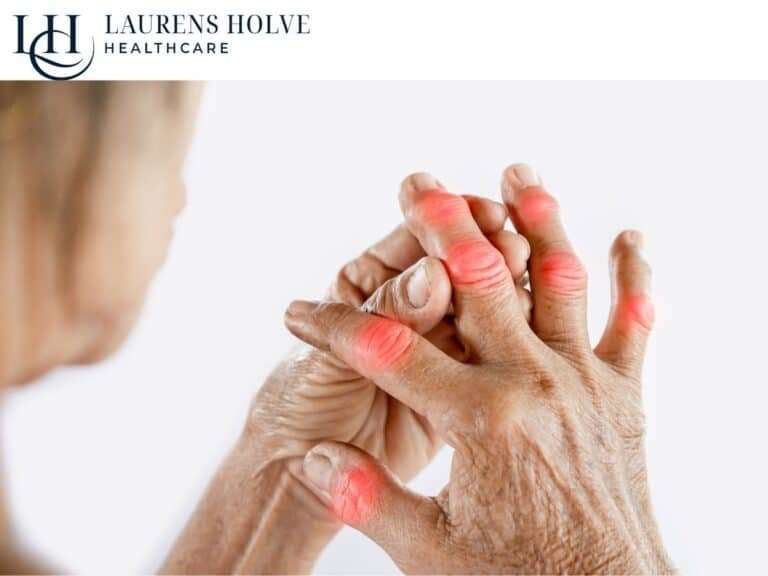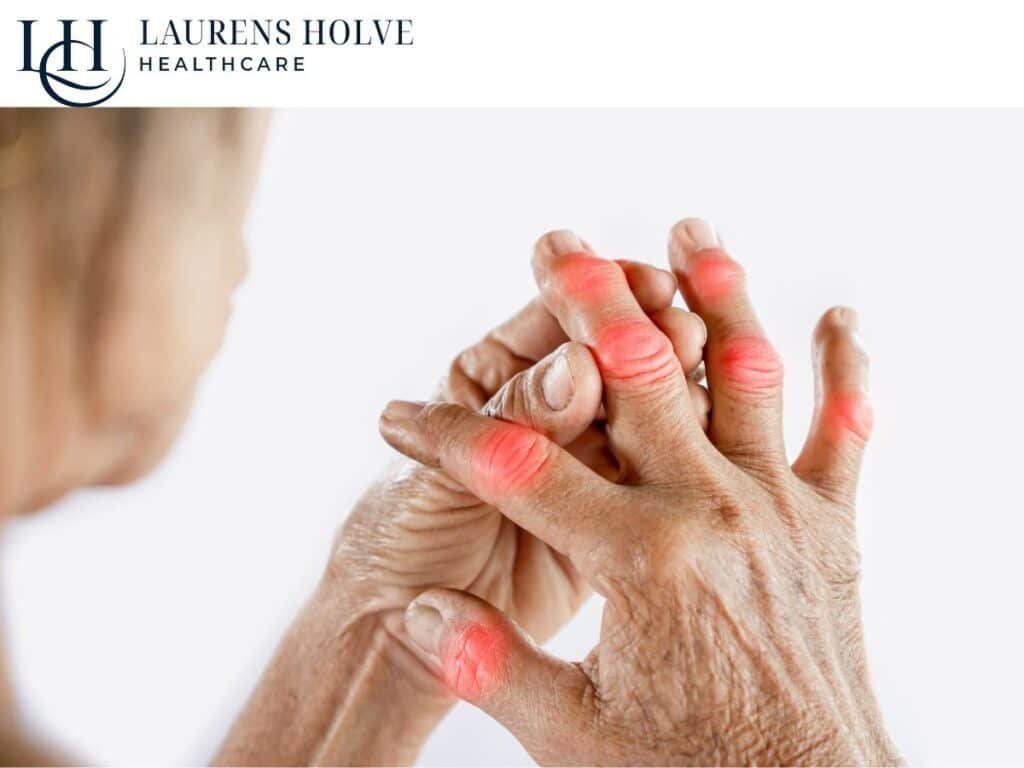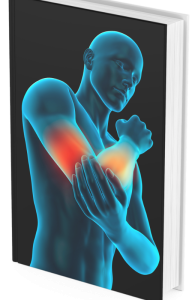
Arthritis is not just a single condition but a spectrum of disorders, each with its own nuances and implications. From the wear and tear of osteoarthritis to the immune responses of rheumatoid arthritis, our understanding of these conditions can be as varied as the experiences of those who live with them.
The Spectrum of Arthritis: A Brief Overview
Arthritis is a term we often hear, but what does it really mean? It refers to a group of more than 100 diseases that affect the joints. These conditions can lead to pain, swelling, and stiffness. For many, arthritis impacts daily life in profound ways. Simple tasks like walking, gripping a cup, or even getting out of bed can become challenging. Can you imagine waking up every morning and feeling like your joints are stiff and painful? It’s not just a nuisance; it can be a significant barrier to enjoying life.
Understanding the Types of Arthritis
When we talk about arthritis, it’s crucial to understand the two main categories: degenerative and inflammatory.
- Degenerative arthritis often arises as we age. Osteoarthritis is the most common form. It occurs when the cartilage that cushions the joints wears down over time. This can lead to pain and reduced mobility.
- Inflammatory arthritis, on the other hand, involves the immune system. Conditions like rheumatoid arthritis fall into this category. Here, the body mistakenly attacks its own joints, leading to swelling and pain.
Each type has its own set of challenges and treatment options. Understanding these differences is essential for effective management.
Arthritis affects millions globally. Yet, many people remain unaware of its complexities. It’s not just one condition but a spectrum of disorders that can vary greatly in their symptoms and treatments. This lack of awareness can lead to misunderstandings about the disease. For instance, many assume arthritis is just an “old person’s disease.” However, inflammatory types can affect young adults and even children.
In summary, whether it’s degenerative or inflammatory, arthritis is a condition that deserves our attention. It’s a reminder that our bodies change over time and that we must adapt. By understanding the different types of arthritis, we can better support those who live with it. We can also advocate for better treatments and, ultimately, a better quality of life for everyone affected.
Degenerative Arthritis: The Case of Osteoarthritis
What is Osteoarthritis?
Osteoarthritis (OA) is the most common type of degenerative arthritis. It’s often described as the *wear and tear* on the joints. Think of your joints like a well-used pair of shoes. Over time, they can lose their cushioning and support. This condition primarily affects the cartilage—the smooth tissue covering the ends of bones in a joint. When this cartilage breaks down, bones can rub against each other, leading to discomfort.
There are several factors that contribute to the development of osteoarthritis. Age is a significant one. As we grow older, our bodies naturally undergo changes. Our joints can become stiffer and less flexible. Obesity is another major factor. Extra weight puts additional strain on weight-bearing joints like the hips and knees. It’s a vicious cycle: the more pain you feel, the less active you become, which can lead to further weight gain.
Recognising the Symptoms
So, how do you know if you might be experiencing osteoarthritis? Here are some symptoms to watch for:
- Stiffness: This is often most noticeable in the morning or after sitting for long periods.
- Pain: You might feel pain during or after movement. It can range from mild to severe.
- Decreased mobility: You may find it more challenging to move your joints through their full range of motion.
Recognising these signs early can make a significant difference in managing the condition. I remember my own experience with a sports injury that led me down this path. Initially, I brushed it off as just another ache. However, over the years, that injury transformed into a nagging pain that affected my daily life. It’s a stark reminder of how untreated injuries can evolve into more severe issues, like osteoarthritis.
Who is at Risk?
Specific demographics are more prone to developing osteoarthritis. Older adults, particularly, experience this condition more frequently. Studies show that it affects approximately 10 million adults in the U.K. That’s a staggering number! But age isn’t the only factor. Genetics, previous joint injuries, and even repetitive stress on the joints can play a role.
Managing Osteoarthritis
What can be done if you find yourself facing osteoarthritis? The good news is that it can often be managed effectively with the right lifestyle changes.
This means focusing on maintaining a healthy weight, staying active, and perhaps exploring physical therapy. Simple exercises can help strengthen the muscles around the joints, providing better support and reducing pain.
Inflammatory Arthritis: Understanding Rheumatoid Arthritis
What is Rheumatoid Arthritis?
Rheumatoid arthritis (RA) is not just another type of arthritis. Unlike degenerative forms, such as osteoarthritis, which wears down the cartilage in joints, RA is an autoimmune condition. This means that the immune system, which is supposed to protect us, mistakenly attacks healthy tissues. Imagine your body as a fortress. Instead of defending against invaders, it turns against its own walls. This misdirection leads to inflammation, pain, and damage in the joints.
Common Symptoms of RA
So, what should we look out for? The symptoms of rheumatoid arthritis can be quite debilitating. Here are some common signs:
- Joint Swelling: Joints may appear swollen and feel warm to the touch.
- Fatigue: A constant sense of tiredness that doesn’t seem to go away.
- Morning Stiffness: Many people experience stiffness in their joints when they wake up, which can last for hours.
These symptoms can vary from person to person. Some days might feel manageable, while others can be overwhelming. It’s like riding a rollercoaster—one moment you’re up, and the next, you’re down.
Understanding the Numbers
It’s staggering to think that around 1 million in UK are affected by rheumatoid arthritis. This statistic highlights the widespread nature of the condition. It’s not just a personal struggle; it’s a societal issue. More awareness can lead to better support systems for those in need.
A Multifaceted Approach to Treatment
Managing rheumatoid arthritis requires a multifaceted approach. It’s not merely about medication. It involves physical therapy, emotional support, and lifestyle changes. Each person’s journey is unique, and what works for one may not work for another. It’s essential to tailor treatment plans to individual needs.
In conclusion, understanding rheumatoid arthritis is crucial. It’s a complex condition that affects not just the joints but also the entire person. By recognising the differences between RA and degenerative arthritis, we can better support those who are affected.
Managing Arthritis: Strategies for Better Joint Health
Living with arthritis can be a daily challenge. But there are effective strategies we can adopt to improve our joint health and overall quality of life. In this blog, I’ll share some essential tips, personal experiences, and insights from experts.
Lifestyle Modifications
One of the most significant aspects of managing arthritis is lifestyle modifications. These changes can make a world of difference. Let’s break it down into three key areas:
- Diet: What we eat matters. A balanced diet rich in fruits, vegetables, whole grains, and lean proteins can help reduce inflammation. Foods high in omega-3 fatty acids, like fish, are particularly beneficial.
- Exercise: It might seem counterintuitive, but staying active is crucial. Low-impact activities such as walking, swimming, or cycling can strengthen muscles around the joints without causing stress.
- Weight Management: Maintaining a healthy weight is vital. Extra pounds put added pressure on our joints, particularly the knees and hips. Losing even a small amount of weight can lead to significant improvements.
Have you ever considered how your daily habits impact your joints? Small changes can lead to big results.
Pain Relief Options
When it comes to managing pain, we have several options. It’s essential to find what works best for us. Here are some common methods:
- Medications: Over-the-counter pain relievers like ibuprofen or paracetamol can help.
- Physical Therapy: Engaging with an Osteopath can provide us with exercises specifically designed to strengthen our joints and improve flexibility.
- Acupuncture: Some people find relief through acupuncture. But more of that on a later blog.
Conclusion
In conclusion, managing arthritis requires a multifaceted approach. From lifestyle modifications like diet and exercise to exploring pain relief options and building a support network, every step counts. Remember, there is no one-size-fits-all solution. Tailoring strategies to our unique needs is vital. Effective management can vastly improve our quality of life.





